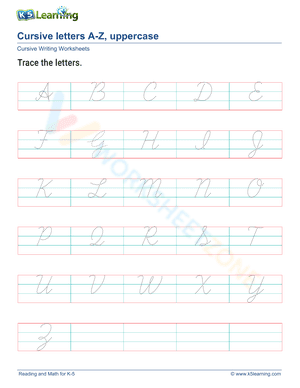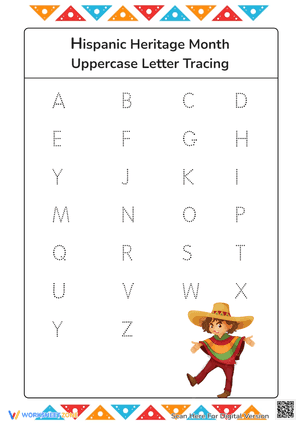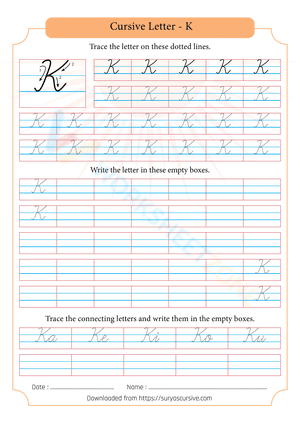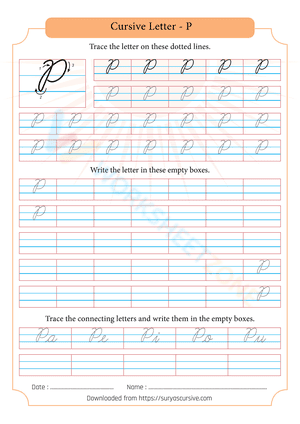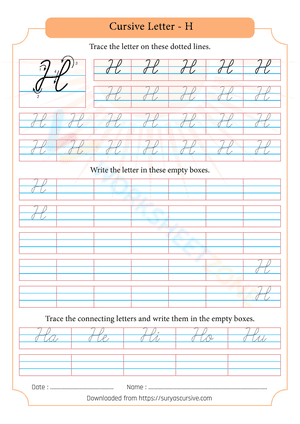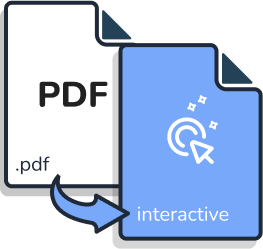With these uppercase cursive worksheets, students can learn and practice handwriting the alphabet in upper cursive letters. Each letter is accompanied by directional prompts and is arranged on a standard ruled line, including the mid-line, to ensure proper height and placement. These handwriting worksheets are great tools for helping learners practice handwriting words and the alphabet using uppercase cursive letters, whether printed or used on an iPad. You can also practice words or individual letters with our printable cursive writing workbook.
Why is uppercase cursive handwriting still important?
While your students may rely on a device such as an iPad or laptop to complete homework or write essays, learning letter formation using the uppercase cursive alphabet has many advantages. Uppercase cursive writing activates different parts of the brain than printing letters and can improve a child's fine motor skills, according to studies. According to research, writing in longhand with the cursive alphabet helps children retain more information and generate ideas more easily. Cursive writing can be used across the curriculum, particularly in writing and science classes. We hope your students enjoy learning to write letters with our guided uppercase cursive worksheets.
How can I teach my child what uppercase letters mean?
The ABCs in cursive uppercase can be taught to kids using this wonderful resource. You can use it to teach your youngster the cursive alphabet, the distinction between upper and lower case, and the appropriate times to utilize each case.
It is perfect for use as a writing prompt for an activity as well as a visual help. Why not keep a copy on hand for your youngster to use as a reference when perfecting their handwriting? As they advance, this will support the development of their abilities and knowledge.
It might be challenging to teach children to write in uppercase cursive. Although uppercase cursive letters are a common feature of handwriting and daily written expression, they can require a different motor strategy that must be established for precision.
When children master cursive writing their names and signatures, uppercase letters become a natural part of their motor plan and an expression of their individuality.
Numerous capital cursive letters are readily forgotten since they are not frequently used. Some children will enjoy writing in cursive since it suits their natural pace and writing style. Only their signatures will be written in cursive by the other kids. Some kids blend upper and lower case cursive letters, while others develop a natural speed and personal style.
The typical adult's handwriting may have both printed and cursive letters, depending on the individual. This is acceptable for adults and people who are writing for speed, such as high school students since the goal is functional written output. On the other hand, formal written work in cursive requires precise and regular formation.
